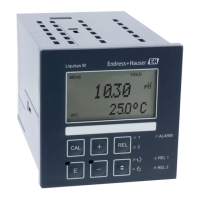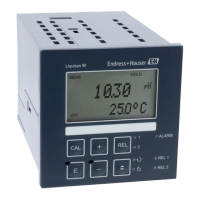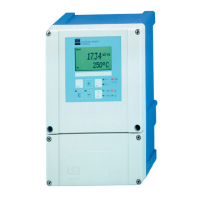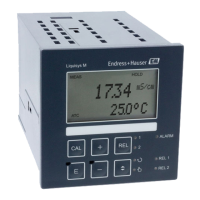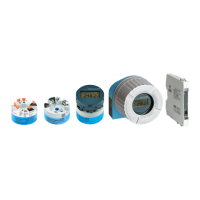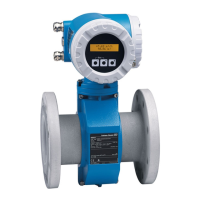Commissioning Liquisys M CCM223/253
46 Endress+Hauser
degrees of dimerization. It is known as "combined chlorine". Combined chlorine has a lower
disinfecting effect but it forms larger depots compared to free chlorine. This means:
• Significantly slower elimination of existing germs.
• Disinfectant effect over considerably longer periods.
• Disinfectant effect over considerably longer transport distances.
The CCS120 amperometric sensor measures the total chlorine content, i.e. free chlorine as
well as chloramine components.
This type of measurement is only slightly pH dependent.
pH compensation of the chlorine sensor signal during free chlorine measurement
(only for ES and EP versions, for CCS140/141 sensors)
To calibrate and verify the chlorine measuring system, a colorimetric reference
measurement must be carried out using the DPD method. Free chlorine reacts with
diethyl-p-phenylendiamine to form a red dye. The intensity of the red color increases
proportionally to the chlorine content. With the DPD method, the water under
measurement is constantly buffered to a pH value of approx. 6.3. Therefore, the pH value
of the water under measurement is not included in the DPD measurement here. Due to the
buffer function in the DPD method, all components of free effective chlorine are recorded
and thus the total free chlorine is measured.
If you select pH compensation in fields B2 or B3, the sum of hypochlorous acid and
hypochlorite corresponding to the DPD measurement is calculated from the hypochlorous
acid measured by the sensor and the pH value in the region of pH 4 to 9. For this
calculation, the curve is stored in the transmitter.
When free chlorine is measured with pH compensation switched on, always perform
calibration in pH-compensated mode.
When you use pH compensation, the measured chlorine value that is displayed and applied
to the device output corresponds to the DPD measured value even if the pH values
fluctuate. If you do not use pH compensation, the measured chlorine value corresponds to
the DPD measurement only if the pH value remains unchanged compared with the
calibration. Without pH compensation, the chlorine measuring system must be
recalibrated when the pH value changes.
pH compensation can be performed both automatically using the connected pH electrode
(EP version) and manually (ES version) by entering the pH value in the B3 field.
Chlorine dioxide and total chlorine measurement is largely or entirely independent of the
pH value and therefore no pH compensation is required.
Accuracy of pH compensation when measuring free chlorine
The accuracy of the pH-compensated measured chlorine value is derived from the sum of
several individual deviations (chlorine, pH, temperature, DPD measurement etc.).
High levels of hypochlorous acid (HOCl) during chlorine calibration have a positive effect
on accuracy, whereas low levels of hypochlorous acid have a negative effect.
The inaccuracy of the pH-compensated measured chlorine value increases the greater the
pH difference between measuring mode and chlorine calibration or the more inaccurate
the underlying individual measured values are.
Calibration of free chlorine taking the pH value into consideration
The reference measurement (DPD method, photometer) determines the total free chlorine
by buffering to pH 6.2. In contrast to this, amperometric measurement determines only
the HOCl component.
During operation, pH compensation is effective up to a pH value of 9. However, there is
hardly any HOCl left at this pH value, and the measured current is very low. At this point,
pH compensation has the effect of increasing the measured HOCl value to the actual value
of the free chlorine.
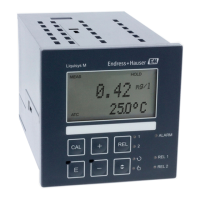
